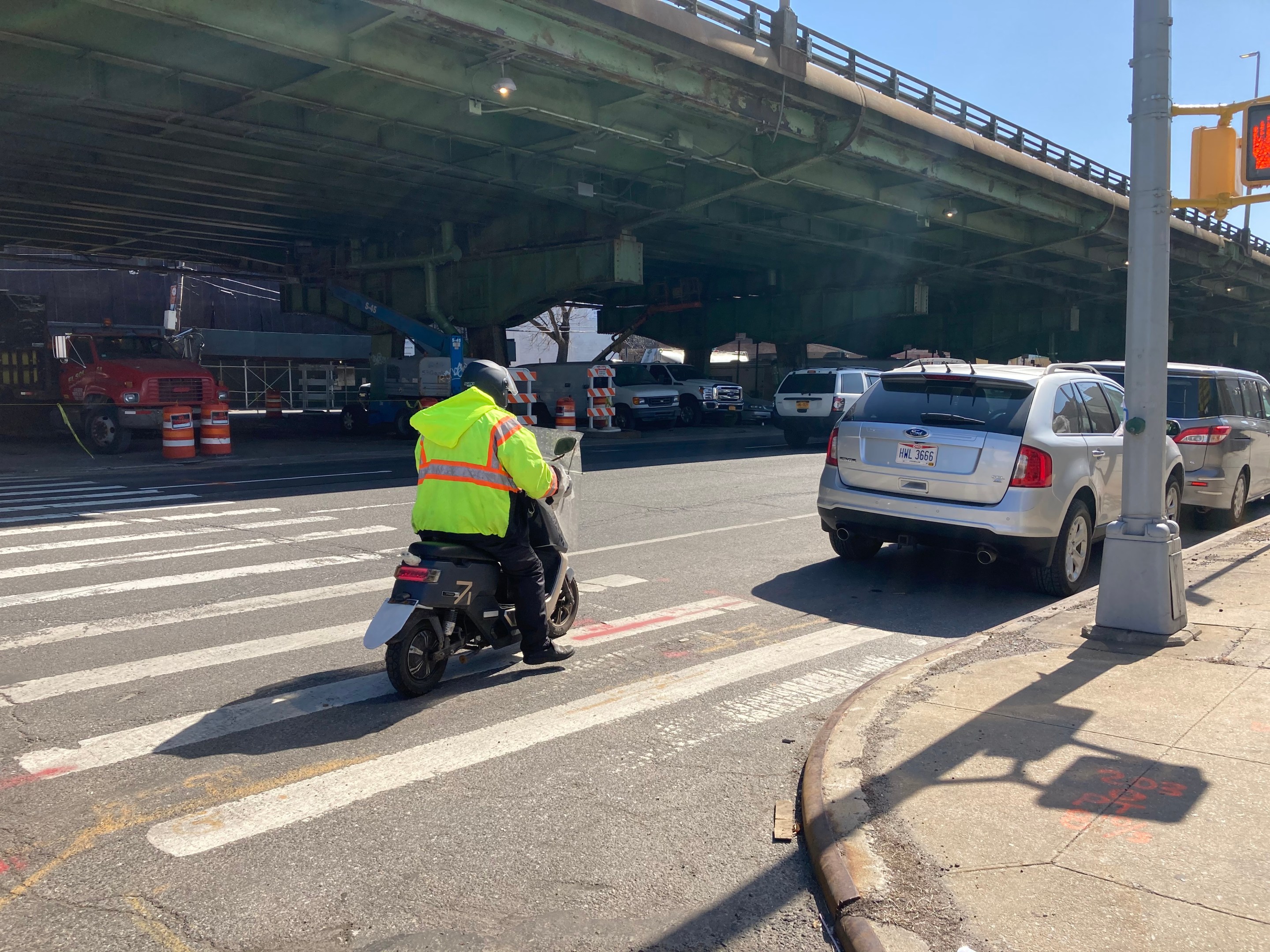The city Department of Transportation is collecting input for how to redesign the deadly stretch of Third Avenue beneath the Gowanus Expressway in Sunset Park – something that should have happened years ago, locals told agency officials at the first of two public workshops on Tuesday.
DOT's forthcoming study of the corridor will be too little, too late, community leaders charged — with 13 people killed and many more injured in crashes there since 2016.
“This is an overdue conversation. I think we have to think dramatically about it given the scale of the problem,” said Katie Walsh, the Transportation Chair of Brooklyn Community Board 7, which encompasses Sunset Park.
DOT scheduled two workshops in the neighborhood to help guide its study of Third Avenue between Prospect Avenue and 62nd Street — where conditions will get worse in the coming years with the continued proliferation of last-mile trucking facilities like Amazon, FedEx, and UPS, according to local politicians and advocates.
“This has been decades in the making. Our urgency around it, it takes years, and yet these facilities continue to come online,” Council Member Alexa Aviles (D-Sunset Park) said in February at a press conference on last-mile trucking facilities.
Tuesday wasn't the first time locals had been asked for their feedback on Third Avenue — a dark, six-lane roadway beneath the elevated Gowanus Expressway portion of the Brooklyn-Queens Expressway. In 2019, just days after the city announced it would work with local officials and community groups for a "re-evaluation of safety" on the corridor, Community Board 7 held a workshop to discuss the same issues that came up on Tuesday night — the strip's lack of crosswalks, dilapidated infrastructure, and dangerously speeding cars and trucks.
Making matters worse are drivers and truckers who choose to take Third Avenue instead of the gridlocked expressway, locals testified on Tuesday. The spillover traffic makes an already perilous route into a dangerous speedway: Thirteen people have been killed along the stretch since 2016 — including five pedestrians, four cyclists, and three car occupants, according to city stats.
The year 2019 was an especially deadly year for cyclists and pedestrians on Third Avenue. In January, drivers killed 27-year-old Fernando Trejo near 52nd Street, and 26-year-old Hugo Garcia near 28th Street. In July, the driver of a tractor-trailer fatally ran over 30-year-old Em Samolewicz after she was doored into traffic near 35th Street; in October, 31-year-old Clara Kang was killed by a motorcyclist while biking home from her shift as a nurse at NYU Langone near 56th Street. And in December, a truck driver killed 85-year-old Brendan Gill near 39th Street.
Brady Meixell, the government relations and business services manager at Southwest Brooklyn Industrial Development Corporation, suggested DOT turn a lane of traffic on the Brooklyn-Queens Expressway into a truck-only lane to relieve some of the burden on the local roadway — an idea that’s been floated before as the city explored how to redesign the crumbling infrastructure.
“The BQE can be so crowded on this stretch that they move quicker on the local road, so if there's some way to expedite that could get them off the local roads,” said Meixell.
Since taking office, I’ve urged @NYC_DOT to make good on longtime demands to conduct a traffic study in Red Hook and of 3rd Ave, our district's most dangerous corridor and a major truck route along the BQE.
— NYC Council Member Alexa Avilés (@NYCCouncil38) April 10, 2023
This month, residents will have their first opportunity to weigh in. pic.twitter.com/zFYRadnHBZ
The strip's dangerous design is compounded by minimal enforcement, attendees said.
“There's very little enforcement on Third Avenue. The double parking is constant, and the double parking also extends to the bus stops. People don't get tickets so they figure it’s cool,” said John Delooper, who attended the 2019 workshop.
But for one meeting attendee and local resident who lives right on Third Avenue at 45th Street, the solution was clear: protected bike lanes. There’s currently no bike lane on Third Avenue under the Gowanus Expressway, but many cyclists — including deliveristas — prefer the route because of its convenience.
“Right now on Third Avenue there are no bike lanes at all, and we as a community on Third Avenue, even my neighbors, use bikes and it’s kind of hazardous to them,” said Damien Andrade.
“In order to increase safety you have to increase more protected bike lanes so they have the accessibility to ride along Third Avenue because a lot of people still have jobs on Third Avenue as well.”
The DOT will hold a second public workshop on Third Avenue on April 27 at 6:30 pm at P.S. 503, 330 59th Street.






